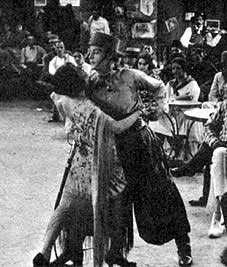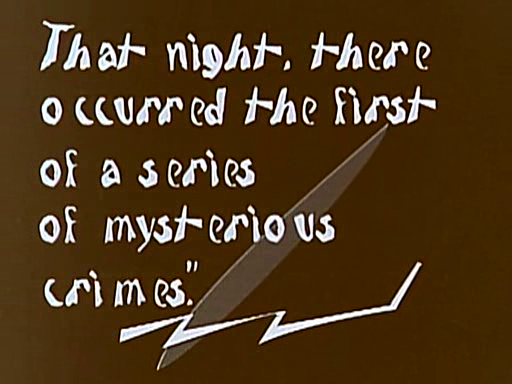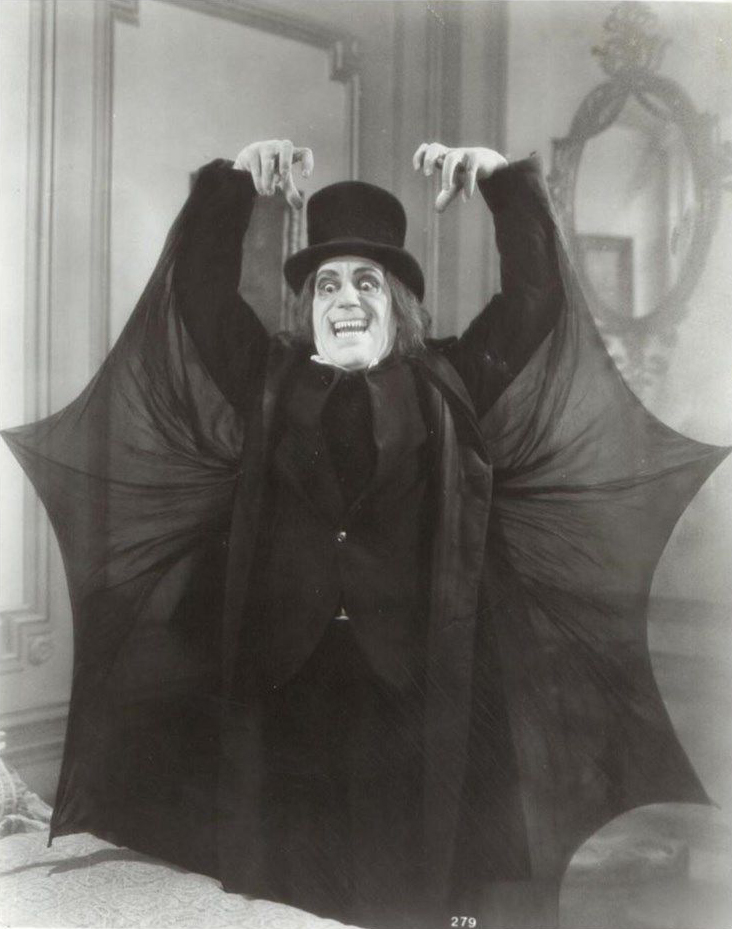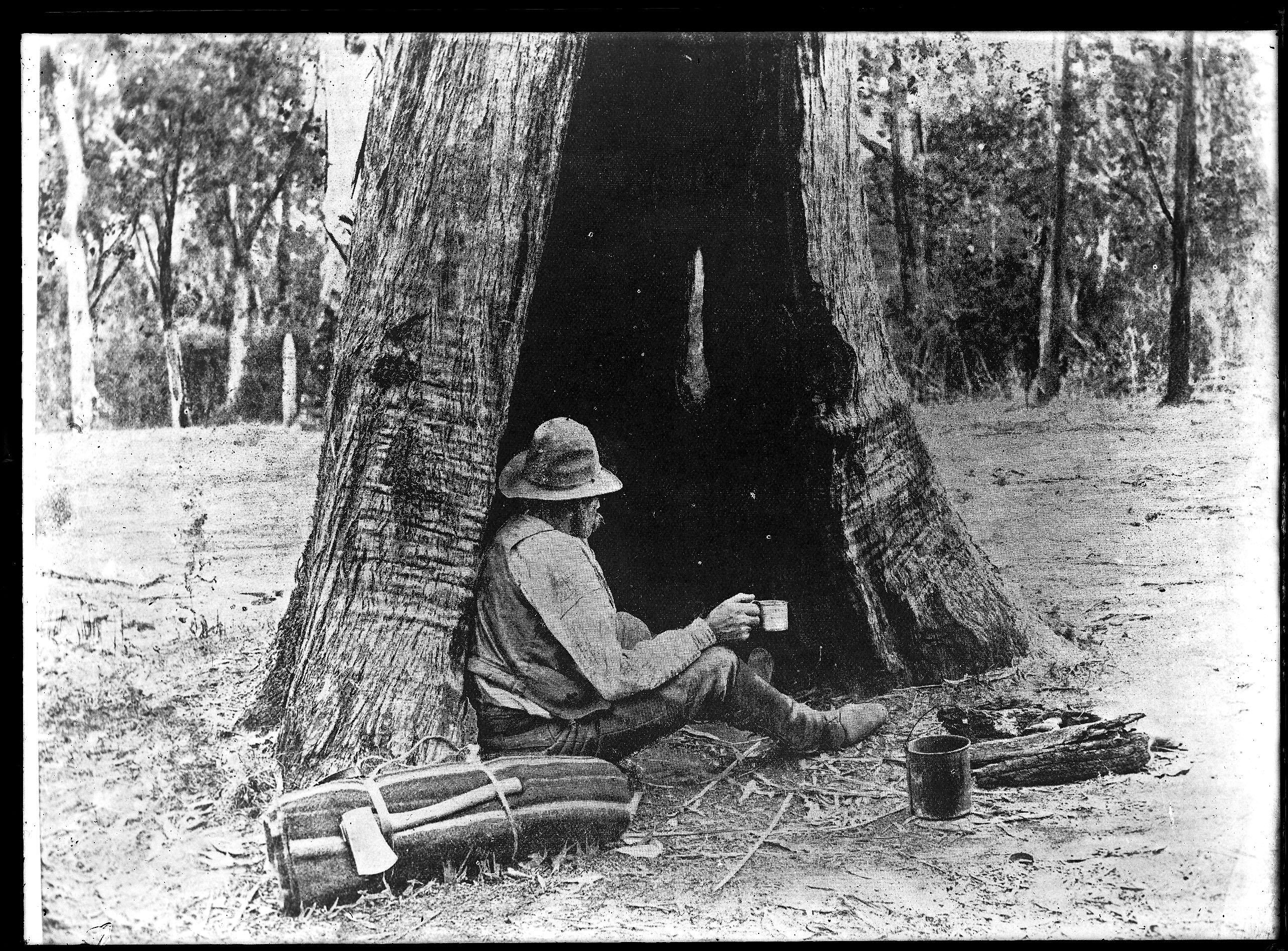|
The Swagman's Story
''The Swagman's Story'' is a 1914 short film directed by Raymond Longford. Although considered a lost film, it is likely that it was a low-budget support feature. Plot A swagman arrives on the scene of the breakdown of a motor car and tells the honeymooning drivers that he's never liked motor cars as they've never done him any good. He then goes on to explain why – ten years earlier he was living happily with his wife and pretty daughter (Lottie Lyell). Then the daughter marries a "swell city cove" and she becomes a member of the high society set, refusing to meet her unsophisticated mother. The mother is killed by a motor car and the father takes to drinking and becomes a swagman. Cast *Lottie Lyell *J Martin *C Stevenson *G Corti References External links''The Swagman's Story''at IMDb IMDb (an abbreviation of Internet Movie Database) is an online database of information related to films, television series, home videos, video games, and streaming content online – ... [...More Info...] [...Related Items...] OR: [Wikipedia] [Google] [Baidu] |
Raymond Longford
Raymond Longford (born John Walter Hollis Longford, 23 September 18782 April 1959) was a prolific Australian film director, writer, producer and actor during the silent era. Longford was a major director of the Australian films: 1896–1919, silent film era of the Australian cinema. He formed a production team with Lottie Lyell. His contributions to Australian cinema with his ongoing collaborations with Lyell, including ''The Sentimental Bloke'' (1919) and ''The Blue Mountains Mystery'' (1921), prompted the Australian Film Institute's Longford Lyell Award, AFI Raymond Longford Award, inaugurated in 1968, to be named in his honour. Biography John Walter Hollis Longford was born in Hawthorn, Victoria, Hawthorn, a suburb of Melbourne, the son of John Walter Longford, a civil servant originally from Sydney, and his English wife, Charlotte Maria. His family soon started referring to him as "Ray". By 1880 they briefly moved to Paynesville, then went to Sydney when Longford's father beca ... [...More Info...] [...Related Items...] OR: [Wikipedia] [Google] [Baidu] |
The Referee (newspaper)
''The Referee'' was a newspaper published in Sydney, Australia from 1886 to 1939. History ''The Referee'' was first published on 20 October 1886 as ''The Sydney Referee'' by Edward Lewis. In 1933 it absorbed '' The Arrow''. It ceased on 31 August 1939. In 1887 Nat Gould started work as "Verax", horse-racing editor for the paper, which published in serial form his first novel, ''With the Tide'', followed by his next five. He returned to England in 1895. Digitisation This paper has been digitised as part of the Australian Newspapers Digitisation Program project of the National Library of Australia. See also * List of newspapers in Australia This is a list of newspapers in Australia. For other older newspapers, see list of defunct newspapers of Australia. National In 1950, the number of national daily newspapers in Australia was 54 and it increased to 65 in 1965. Daily newspap ... * List of newspapers in New South Wales References External links * {{DEFAULTSO ... [...More Info...] [...Related Items...] OR: [Wikipedia] [Google] [Baidu] |
Lottie Lyell
Lottie Lyell (born Charlotte Edith Cox, 23 February 1890 – 21 December 1925) was an Australian actress, screenwriter, editor and filmmaker. She is regarded as Australia's first film star, and also contributed to the local industry during the silent era through her collaborations with director and writer Raymond Longford. She was born in Balmain, a suburb in Sydney, New South Wales in 1890.National Film & Sound Archive, Photo Play Artiste of Lottie Lyell by Marilyn Dooley By 1912, Lyell had become romantically involved with Longford. The couple lived together in |
Tasman Higgins
Tasman Higgins (8 April 1888 – 4 June 1953) was an Australian cinematographer during the early days of the Australian film industry, working for such directors as Charles Chauvel, Raymond Longford, Beaumont Smith, Louise Lovely and Rupert Kathner. He was the brother of Arthur and Ernest Higgins, with whom he occasionally collaborated. His most notable association was with Charles Chauvel, starting with ''In the Wake of the Bounty'' (1933), which was Errol Flynn's first film and involved three months of location filming on Pitcairn Island. Other credits include ''Heritage'' (1935), ''Uncivilised'' (1936) and the cavalry scenes of ''Forty Thousand Horsemen'' (1940).Andrew Pike and Ross Cooper, ''Australian Film 1900–1977: A Guide to Feature Film Production'', Melbourne: Oxford University Press, 1998, 193. Select Filmography *''The Tide of Death'' (1912) *'' Australia Calls'' (1913) *''The Silence of Dean Maitland'' (1914) *'' A Coo-ee from Home'' (1918) *''The Hordern Myster ... [...More Info...] [...Related Items...] OR: [Wikipedia] [Google] [Baidu] |
Silent Film
A silent film is a film with no synchronized Sound recording and reproduction, recorded sound (or more generally, no audible dialogue). Though silent films convey narrative and emotion visually, various plot elements (such as a setting or era) or key lines of dialogue may, when necessary, be conveyed by the use of intertitle, title cards. The term "silent film" is something of a misnomer, as these films were almost always accompanied by live sounds. During the silent era that existed from the mid-1890s to the late 1920s, a piano, pianist, theatre organ, theater organist—or even, in large cities, a small orchestra—would often play music to accompany the films. Pianists and organists would play either from sheet music, or musical improvisation, improvisation. Sometimes a person would even narrate the inter-title cards for the audience. Though at the time the technology to synchronize sound with the film did not exist, music was seen as an essential part of the viewing experie ... [...More Info...] [...Related Items...] OR: [Wikipedia] [Google] [Baidu] |
Intertitles
In films, an intertitle, also known as a title card, is a piece of filmed, printed text edited into the midst of (i.e., ''inter-'') the photographed action at various points. Intertitles used to convey character dialogue are referred to as "dialogue intertitles", and those used to provide related descriptive/narrative material are referred to as "expository intertitles". In modern usage, the terms refer to similar text and logo material inserted at or near the start or end of films and television shows. Silent film era In this era intertitles were mostly called "subtitles" and often had Art Deco motifs. They were a mainstay of silent films once the films became of sufficient length and detail to necessitate dialogue or narration to make sense of the enacted or documented events. ''The British Film Catalogue'' credits the 1898 film ''Our New General Servant'' by Robert W. Paul as the first British film to use intertitles. Film scholar Kamilla Elliott identifies another early use of ... [...More Info...] [...Related Items...] OR: [Wikipedia] [Google] [Baidu] |
Lost Film
A lost film is a feature or short film that no longer exists in any studio archive, private collection, public archive or the U.S. Library of Congress. Conditions During most of the 20th century, U.S. copyright law required at least one copy of every American film to be deposited at the Library of Congress at the time of copyright registration, but the Librarian of Congress was not required to retain those copies: "Under the provisions of the act of March 4, 1909, authority is granted for the return to the claimant of copyright of such copyright deposits as are not required by the Library." A report created by Library of Congress film historian and archivist David Pierce claims: * 75% of original silent-era films have perished. * 14% of the 10,919 silent films released by major studios exist in their original 35 mm or other formats. * 11% survive only in full-length foreign versions or film formats of lesser image quality. Of the American sound films made from 1927 to ... [...More Info...] [...Related Items...] OR: [Wikipedia] [Google] [Baidu] |
Swagman
A swagman (also called a swaggie, sundowner or tussocker) was a transient labourer who travelled by foot from farm to farm carrying his belongings in a swag. The term originated in Australia in the 19th century and was later used in New Zealand. Swagmen were particularly common in Australia during times of economic uncertainty, such as the 1890s and the Great Depression of the 1930s. Many unemployed men travelled the rural areas of Australia on foot, their few meagre possessions rolled up and carried in their swag. Their swag was frequently referred to as "Matilda", hence Waltzing Matilda refers to walking with their swag. Typically, they would seek work in farms and towns they travelled through, and in many cases the farmers, if no permanent work was available, would provide food and shelter in return for some menial task. The figure of the "jolly swagman", represented most famously in Banjo Paterson's bush poem "Waltzing Matilda", became a folk hero in 19th-century Aust ... [...More Info...] [...Related Items...] OR: [Wikipedia] [Google] [Baidu] |
The Morning Bulletin
''The Morning Bulletin'' is an online newspaper servicing the city of Rockhampton and the surrounding areas of Central Queensland, Australia. From 1861 to 2020, ''The Morning Bulletin'' was published as a print edition, before then becoming an exclusively online newspaper. The final print edition was published on 27 June 2020. History The first issue of ''The Bulletin'' was launched on 9 July 1861. It is the second oldest business in Rockhampton, the oldest being the Criterion Hotel which was established in October 1860. The founder and original owner, William Hitchcock Buzacott (1831–1880, brother of Charles Hardie Buzacott), brought the press and equipment from Sydney in 1861 where he operated a small weekly paper. At the time the paper was called the Rockhampton Bulletin and was eagerly read by the town's 698 residents. The newspaper was published as ''The Rockhampton Bulletin and Central Queensland Advertiser'' from July 1861 to 14 January 1871. Then as ''The Rockh ... [...More Info...] [...Related Items...] OR: [Wikipedia] [Google] [Baidu] |
IMDb
IMDb (an abbreviation of Internet Movie Database) is an online database of information related to films, television series, home videos, video games, and streaming content online – including cast, production crew and personal biographies, plot summaries, trivia, ratings, and fan and critical reviews. IMDb began as a fan-operated movie database on the Usenet group "rec.arts.movies" in 1990, and moved to the Web in 1993. It is now owned and operated by IMDb.com, Inc., a subsidiary of Amazon. the database contained some million titles (including television episodes) and million person records. Additionally, the site had 83 million registered users. The site's message boards were disabled in February 2017. Features The title and talent ''pages'' of IMDb are accessible to all users, but only registered and logged-in users can submit new material and suggest edits to existing entries. Most of the site's data has been provided by these volunteers. Registered users with a prov ... [...More Info...] [...Related Items...] OR: [Wikipedia] [Google] [Baidu] |
1914 Films
The year 1914 in film involved some significant events, including the debut of Cecil B. DeMille as a director.Birchard, Robert S. (2004). ''Cecil B. DeMille's Hollywood''. Lexington, Kentucky: The University Press of Kentucky, p. 1-13, __TOC__ Events * February 2 – Charlie Chaplin's first film, '' Making a Living'' is released. * February 7 – Release of Charlie Chaplin's second film, the Keystone comedy ''Kid Auto Races at Venice'', in which his character of The Tramp is introduced to audiences (although first filmed in '' Mabel's Strange Predicament'', released two days later). * February 8 – Winsor McCay's '' Gertie the Dinosaur'' greatly advances filmed animation movement techniques. * February 10 – Release of the film ''Hearts Adrift''; the name of Mary Pickford, the star, is displayed above the title on movie marquees. * February – Lewis J. Selznick and Arthur Spiegel organize the World Film Corporation, a distributor of independently produced films locat ... [...More Info...] [...Related Items...] OR: [Wikipedia] [Google] [Baidu] |
Australian Silent Short Films
Australian(s) may refer to: Australia * Australia, a country * Australians, citizens of the Commonwealth of Australia ** European Australians ** Anglo-Celtic Australians, Australians descended principally from British colonists ** Aboriginal Australians, indigenous peoples of Australia as identified and defined within Australian law * Australia (continent) ** Indigenous Australians * Australian English, the dialect of the English language spoken in Australia * Australian Aboriginal languages * ''The Australian ''The Australian'', with its Saturday edition, ''The Weekend Australian'', is a broadsheet newspaper published by News Corp Australia since 14 July 1964.Bruns, Axel. "3.1. The active audience: Transforming journalism from gatekeeping to gatewat ...'', a newspaper * Australiana, things of Australian origins Other uses * Australian (horse), a racehorse * Australian, British Columbia, an unincorporated community in Canada See also * The Australian (disambiguation ... [...More Info...] [...Related Items...] OR: [Wikipedia] [Google] [Baidu] |




